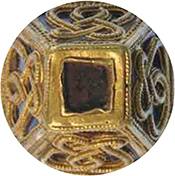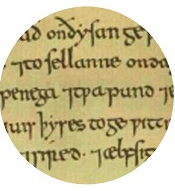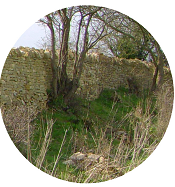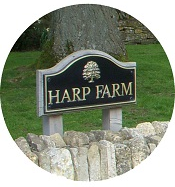The bookshelf display includes a selection of recent authored and edited volumes by members of the Early Medieval Atlas.
R. Comeau and A. Seaman (eds), Living off the Land: Agriculture in Wales c.400-1600 AD (Oxbow 2019) 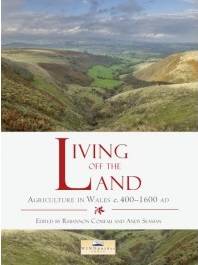
| This is the first book for a generation on medieval agriculture in Wales, presenting evidence which is of considerable relevance to those studying the development of the early medieval landscapes of England and Ireland. This collection of essays confronts the paradox that, though agriculture lay at the heart of medieval society, understanding of what this meant for Wales remains limited. The papers address key questions that include: how did the agricultural systems of Wales operate between c. 400 and 1600 AD? What light do they cast on the material evidence for life in the contemporary landscape? How similar or different was Wales to other areas of Britain and Ireland? Can we identify change over time? How do we go about researching early Welsh agriculture? These issues are explored through new syntheses and case studies focused on Wales, and contextualising overviews of medieval agricultural systems in Ireland and England written by leading experts. Themes covered include the use of infield-outfield systems, seasonal land use and its impact on territorial and estate structures, and regional variation, all explored using a wide array of complementary multidisciplinary approaches. The introduction, written by the editors Rhiannon Comeau and Andy Seaman, gives context to the historiography, key debates, themes and issues surrounding this topic. The book also includes an afterword written by Professor Andrew Fleming. |
H. Lewis, Pattern and Process in the material Culture of Anglo-Saxon Non-elite Rural Settlements (BAR Publishing 2019) 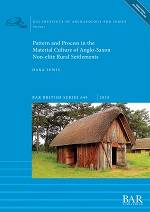 | The research presented in this book advances scholarship on Anglo-Saxon non-elite rural settlements through the analysis of material culture. Forty-four non-elite sites and the high-status site of Staunch Meadow, occupied throughout the Anglo-Saxon period (c. 5th-11th centuries) and geographically representative of Anglo-Saxon settlement in England, were selected for study. Comparative analyses of the material culture assemblages and settlement data from these sites were evaluated from four main research perspectives: the archaeological contexts and distributional patterns of material culture at the sites; the range and character of material culture; patterns of material culture consumption; and material culture as evidence for the economic reach of rural settlements. |
T. Williams, Viking London (Harper Collins 2019) 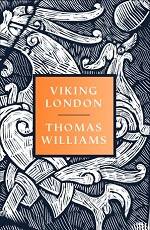 | Viking Britain author Thomas Williams returns with a brief history of the interaction between the Vikings and the British to tell the story of the occupation of London. The Vikings remoulded the world, changed the language, and upended the dynamics of power and trade. Monasteries and settlements burned, ancient dynasties were extinguished. And nowhere in these islands saw more aggression than London. Between 842 and 1016, the city was subjected repeatedly to serious assault. In this short history Thomas Williams recounts the profound impact Viking raiders from the North had on London. Delving into London’s darkest age, he charts how the city was transformed in this period by immigrants and natives, kings and commoners, into the fulcrum of national power and identity. London emerged as a hub of trade, production and international exchange, a financial centre, a political prize, a fiercely independent and often intractable cauldron of spirited and rowdy townsfolk: a place that, a thousand years ago, already embodied much of what London was to become and still remains. This remarkable book takes the reader into a city of spectres, to its ancient past, to timeworn street names hidden beneath concrete underpasses, to the crypts of old churches, to a stretch of the old river bank, or the depths of museum collections. Nothing is lost in the city. And memories of the Vikings hover like a miasma in these places, blowing across the mud and shingle on the Thames foreshore – ghosts of Viking London. |
S. Brunning, The Sword in Early Medieval Northern Europe. Experience, Identity, Representation (Boydell and Brewer 2019) 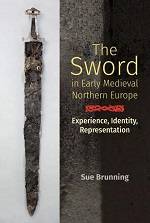 | A wide-ranging study of the significance of swords throughout the whole Anglo-Saxon period, offering valuable insights into the meaning of and attitude towards swords. Swords were special in Anglo-Saxon England. Their names, deeds and pedigrees were enshrined in writing. Many were curated for generations, revealed by their worn and mended condition. Few ended their lives as casual discards, placed instead in graves, hoards and watercourses as part of ritualised acts. Contemporary sources leave no doubt that complex social meanings surrounded these weapons, transcending their use on the battlefield; but they have yet to transcend the traditional view that their primary social function was as status symbols. Even now, half a century after the first major study of Anglo-Saxon swords, their wider significance within their world has yet to be fully articulated. This book sets out to meet the challenge. Eschewing modern value judgements, it focuses instead on contemporary perceptions - exploring how those who made, used and experienced swords really felt about them. It takes a multidisciplinary and holistic approach, bringing together insights from art, archaeology and literature. Comparison with Scandinavia adds further nuance, revealing what was (and was not) distinctive of Anglo-Saxon views of these weapons. Far from elite baubles, swords are revealed to have been dynamic "living" artefacts with their own identities, histories and places in social networks - ideas fuelled by their adaptability, durability and unique role in bloodshed. |
J. C. Sánchez-Pardo and M. G. Shapland (eds), Churches and Social Power in Early Medieval Europe. (Brepols, 2015) 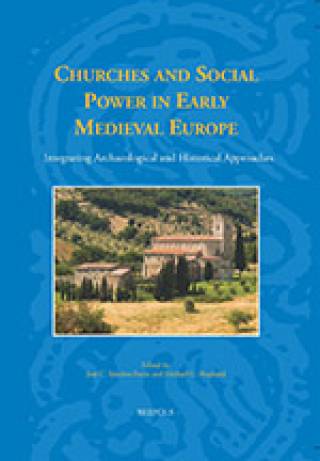 | This book takes a comparative and interdisciplinary approach to the study of early medieval churches, drawing together archaeology, history, architecture, and landscape studies in order to explore the relationship between church foundation, social power, and political organization across Europe. Key subjects addressed here include the role played by local elites and the importance of the church in buttressing authority, as well as the connections between archaeology and ideology, and the importance of individual church buildings in their broader landscape contexts. |
Alexandra Chavarría Arnau and Andrew Reynolds (SAP Societā Archeologica, 2015) 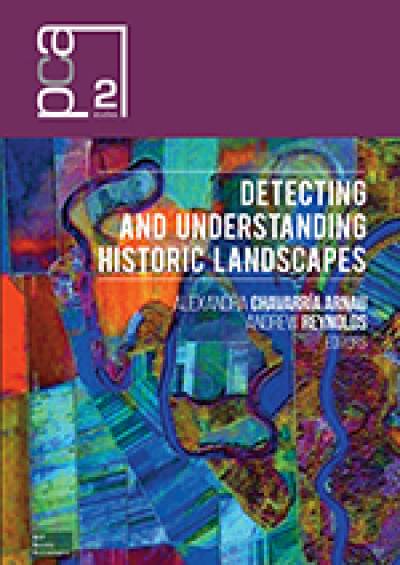 | It is an exciting time to be a landscape archaeologist. Rapid developments in methodology, a wider appreciation of explicitly theorised research and the investigation of increasingly nuanced questions have all ensured the rapid maturation of this relatively young sub-discipline of archaeology. The book is composed of 16 chapters, written by outstanding international specialists, which allow the reader to understand how comprehensive research on historic landscape can be achieved. Special care has been taken in assuring the homogeneity of the different texts, which include separate illustrative case studies, box features and suggested further reading on the various topics in order to provide a useful tool for the teaching of landscape archaeology. |
________________________________________________________________
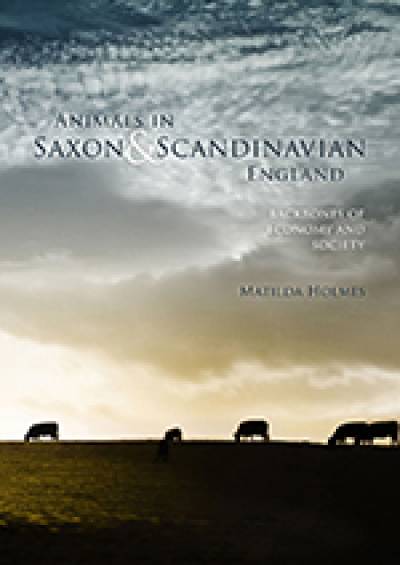
| In this book an analysis of over 300 animal bone assemblages from English Saxon and Scandinavian sites is presented. The data set is summarised in extensive tables for use as comparanda for future archaeozoological studies. Animals in Saxon and Scandinavian England takes as its core four broad areas of analysis. The first is an investigation of the diet of the population, and how food was used to establish social boundaries. Increasingly diverse diets are recognised, with high-status populations distinguishing themselves from other social sectors through the way food was redistributed and the diversity of taxa consumed. Secondly, the role of animals in the economy is considered, looking at how animal husbandry feeds into underlying modes of production throughout the Saxon period. From the largely self-sufficient early Saxon phase animal husbandry becomes more specialised to supply increasingly urban settlements. The ensuing third deliberation takes into account the foodways and interactions between producer and consumer sites, considering the distribution of food and raw materials between farm, table and craft worker. Fundamental changes in the nature of the Saxon economy distinguish a move away from food renders in the middle Saxon phase to market-based provisioning; opening the way for greater autonomy of supply and demand. Finally, the role of wics and burhs as centres of production is investigated, particularly the organisation of manufacture and provisioning with raw materials. |
________________________________________________________________
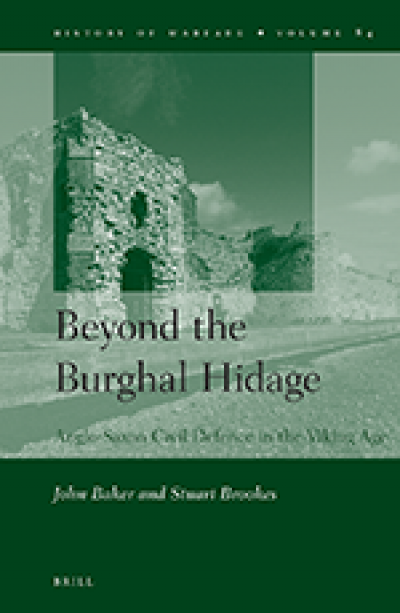 | As the title suggests, Beyond the Burghal Hidage takes the study of Anglo-Saxon civil defence away from traditional historical and archaeological fields, and uses a groundbreaking interdisciplinary approach to examine warfare and public responses to organised violence through their impact on the landscape. By bringing together the evidence from a wide range of archaeological, onomastic and historical sources, the authors are able to reconstruct complex strategic and military landscapes, and to show how important detailed knowledge of early medieval infrastructure and communications is to our understanding of Anglo-Saxon preparedness for war, and to the situating of major defensive works within their wider strategic context. The result is a significant and far-reaching re-evaluation of the evolution of late Anglo-Saxon defensive arrangements. |
| Beyond the Burghal Hidage: Anglo-Saxon Civil Defence in the Viking Age by John Baker and Stuart Brookes (Brill 2013) | Winner of the 2013 Verbruggen prize, De Re Militari society, best book on medieval military history. "The book ... is genuinely original and a fascinating read, with wider implications for the way in which medieval states managed warfare." John France |
________________________________________________________________
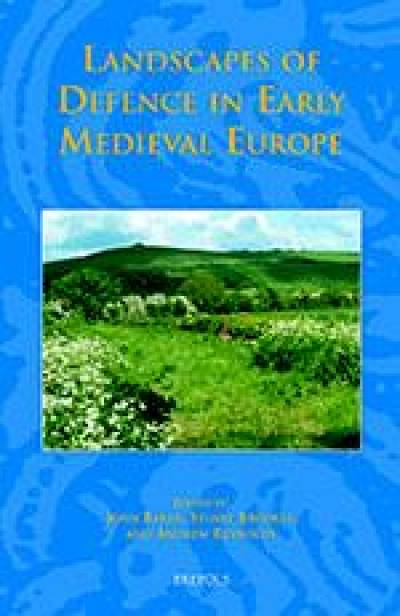 | This volume is the result of a conference at University College London in 2007 which addressed the scale and form of civil defences in early medieval Europe, c. 800-1000. Previous work has largely focussed on individual sites or specific categories of evidence. These papers offer new interdisciplinary perspectives driven by a landscape approach. Several contributions focus on civil defence in England around the time of King Alfred the Great, and together provide a new agenda for the study of Anglo-Saxon military landscapes. European case-studies facilitate a comparative approach to local and regional defensive structures and interpretive paradigms. Topics and themes covered include civil defence landscapes, the organization and form of defensive structures, and the relationships and dynamics between social complexity, militarization, and external threats. |
| Landscapes of Defence in Early Medieval Europe by John Baker, Stuart Brookes and Andrew Reynolds (eds.)(Brepols 2013) | With papers ranging from England to Spain and Germany to Scandinavia the volume is of relevance to a range of disciplines including archaeology, history, onomastics, geography, and anthropology. |
________________________________________________________________
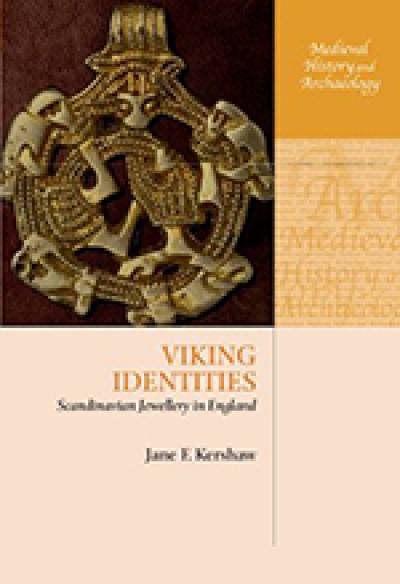
| Viking Identities is the first detailed archaeological study of Viking-Age Scandinavian-style female dress items from England. Based on primary archival and archaeological research, including the analysis of hundreds of recent metal-detector finds, it presents evidence for over 500 brooches and pendants worn by women in the late ninth and tenth centuries. Kershaw argues that these finds add an entirely new dimension to the limited existing archaeological evidence for Scandinavian activity in the British Isles and make possible a substantial reassessment of the Viking settlements. Kershaw describes the objects and explores a number of themes related to their contemporary use, including their date, distribution, and function in costume. This body of material - unknown 30 years ago - is introduced to a public audience for the first time. Including many object images and maps, the study provides a practical guide to the identification of Scandinavian metalwork. |
________________________________________________________________
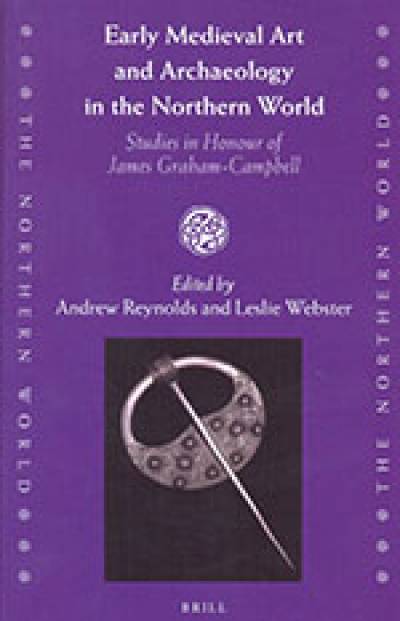 | Early Medieval Art and Archaeology in the Northern World brings together leading experts on the European early Middle Ages in a celebration of the life and work of internationally renowned scholar James Graham-Campbell. The geographical coverage of this volume reflects Graham-Campbell's interests and expertise which ranges from Ireland to Eastern Europe and from Scandinavia to Spain. The new perspectives and original studies offered represent a major contribution to the field of medieval studies, with papers on the art, archaeology, history and literature of European societies between the fifth and thirteenth centuries. |
| Early Medieval Art and Archaeology in the Northern World, by Andrew Reynolds and Leslie Webster (eds.)(Brepols 2013) |
________________________________________________________________
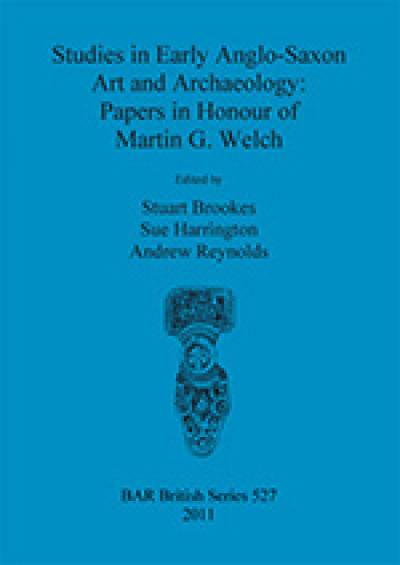 | Studies in Early Anglo-Saxon Art and Archaeology brings together 20 essays, predominantly focusing on the archaeology of the fifth to seventh centuries in southern England, in honour of Martin G. Welch. Papers describe new discoveries, and both funerary and non-funerary deposits are analysed to explore themes of identity, gender, and cross-Channel relationships. |
| Studies in Early Anglo-Saxon Art and Archaeology: Papers in Honour of Martin G. Welch, by Stuart Brookes, Sue Harrington and Martin Welch (eds.)(BAR 2011) |
________________________________________________________________
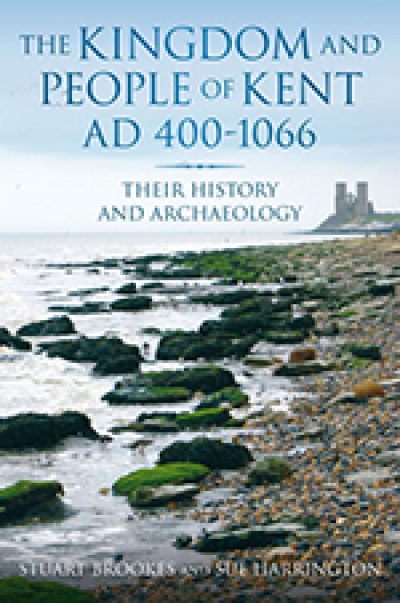
| The history of the kingdom and people of Kent is important because it offers the clearest insights into the continuities, changes and transformations that produced Anglo-Saxon England out of the remains of Roman Britain. The first historically-attested king, the first point of contact for the Augustinian Mission, the first recorded law codes and later, a major target for Viking raiders, Kent was at the centre of key events and upheavals between the end of the Roman period and the Norman Invasion of 1066. This book presents a chronological account examined through discussions of major themes - migration, settlement, the making of kingship, the impact of the Church, warfare and defence - drawing on written, topynomic and archaeological sources, all synthesised with the findings of new research. Aimed at a general audience, here is a clear, illustrated overview, looking at both the everyday experience of people living through momentous times and the wider world that made Kent such a special place in the past. |
________________________________________________________________
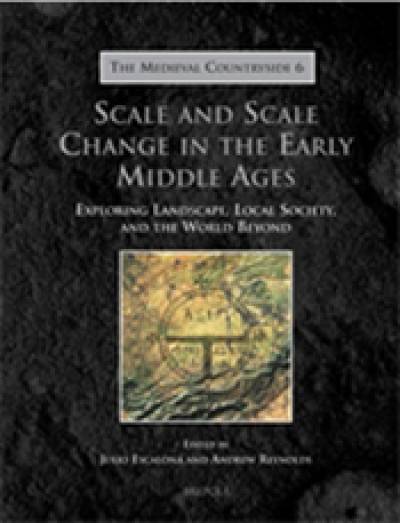
Exploring Landscape, Local Society, and the World Beyond, by Julio Escalona and Andrew Reynolds (eds.)(Brepols, 2010) |
This book aims to draw attention to the potential of concepts of scale and scale change in explaining and comparing socio-spatial processes in early medieval societies. Kings, aristocrats, peasants, and the Church are among the shared features of most early medieval societies. However, these also varied dramatically in time and space. Can petty regional kings, for instance, be compared to those in charge of a whole empire? Scale is a crucial factor in modelling, explaining, and conceptualizing the past. Furthermore, many issues that historians and archaeologists treat independently can be theorized together as processes of scale decrease or increase: the appearance of complex societies, the rise and collapse of empires, changing world-systems, and globalization. While a subject of much discussion in fields such as ecology, geography, and sociology, scale is rarely theorized by archaeologists and historians. This book highlights the potential of the concepts of scale and scale change for comparing and explaining medieval socio-spatial processes. It integrates regional and temporal variations in the fragmentation of the Roman world and the emergence of medieval polities, which are often handled separately by late antique and early medieval specialists. The result of a three-year research project, the nine case studies in this volume offer fresh insights into early medieval rural society while combining their individual subjects to generate a wider explanatory framework. |
 Close
Close


